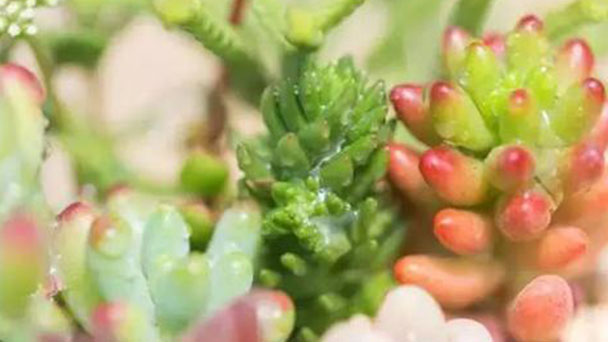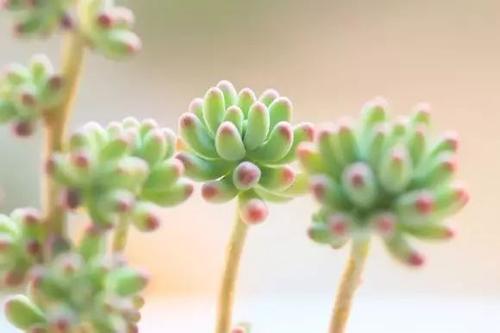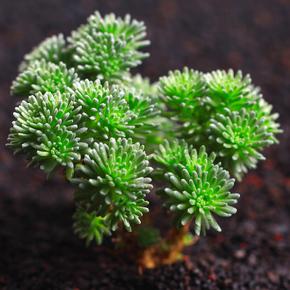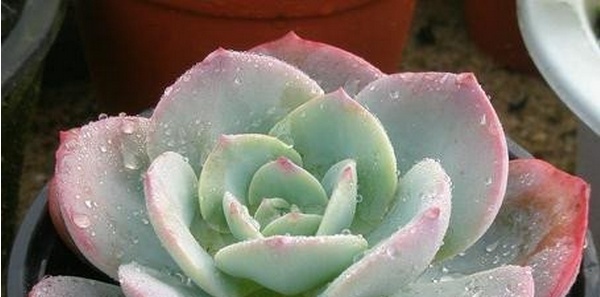How to take care of succulents
Written by Maggie
Dec 19 2020

Succulent plants are popular indoor potted plants among flower lovers in recent years. Because of their diverse forms and good health, succulent dishes are very suitable for cultivation. Many friends want to keep succulent plants fat and beautiful. So how to take care of succulents? Here are some caring tips for growing succulents.

How to take care of succulents when leaves falling
The loss of leaves may be caused by excessive watering. Use loose and breathable soil to ensure sufficient light for four hours a day. If it is black rot, remove the damaged leaves and leave them in a cool, ventilated place to wait for the wound to heal.
1. Watering for succulents
Succulents have a certain drought resistance. In the growing process, water should be controlled to avoid root rot caused by water. Loose and fertile soil can be selected and some sand and gravel soil can be added to increase the permeability of the soil. Wait until the soil is dry before watering. Water thoroughly to keep the soil moist.
2. Light for succulents
Succulents like a sunny environment. Not enough light, leaves grow slowly and fall easily. You need to get four hours of light a day to keep your meat growing. In the summer illumination is intense, we can undertake shading protection.
3. Succulents root rot
If there is a problem with the succulent root, you can disinfect the blade, trim the rotten part, apply carbendyll powder to the wound, wait for the wound to dry and then put it into the basin again。 Put it in a ventilated and cool place, ensure the air circulation, and promote the recovery of the succulent leaf.
4. Black rot of succulents
If the fleshy leaves suffer from black rot, they fall off and hydrate, which can quickly spread throughout the plant if not prevented. The damaged leaves can be pruned, or the top trunk beheaded, waiting for the succulent leaves to re-germinate.

How to take care of succulents when leaves softening and wrinkled
Succulent leaves are soft and wrinkled. If the soil is dry, you can replenish water in a timely manner. We can provide a stable environment for succulents, until the root is stable after careful maintenance. Usually giving succulent water does not appear to avoid root rot. If it is a succulent metabolism, the leaves will also be soft, and can be pruned appropriately, increasing nutrient supplement.
1. Hydrate for succulent
Succulent plants tend to grow in a moist environment. If succulent plants stay dry for a long time, the soil will become dry and cracked. A lack of water will lead to a large amount of water evaporating from the leaves, which will become soft and wrinkled. Watering the succulents should be done in a timely manner, gradually increasing the amount of water and the leaf condition will improve after a day.
2. Stabilize the environment for succulent
When transplanting succulent leaves becomes soft and wrinkled, succulent is not very good to adapt to the environment. We need to control water, wait until succulent adapts to the environment well, and appropriately add some water, ensure the root solid, until the succulent can grow normally.
3. Trim the succulent roots
If you water too much, it will cause the fleshy roots to rot and the leaves to wilt and become soft. The succulents need to be turned out of a bowl, the roots pruned, the rotting parts disinfected with a solution of potassium permanganate, and then replanted.
When the fleshy metabolism is normal, the leaves at the bottom of the fleshy will also wither and become soft, which can be timely pruned to avoid the loss of nutrients, or fertilized properly to the fleshy, increase the nutrient supplement, and slow down the rate of the bottom leaves dying.

Latest Updated
- Benefits of Bugleweed - 7 Science-backed Health Benefits
- Bugleweed Dangers & Side Effects - Is It Poisonous?
- How to Plant Evergreen Trees - What You Should Know
- When to Plant Evergreens - Grow Guide for Evergreen Trees
- 12 Wonderful Evergreen Shrubs for Your Garden
- 12 Popular Evergreen Plants with Pictures for Beginners
- When And How To Prune A Lilac Bush Like a Pro
- How to Grow & Care for Lilac Vine (Hardenbergia Violacea)
- Japanese Lilac Tree (Syringa Reticulata) Care & Propagation Guide
- Shumard Oak Pros and Cons - What to Know
Popular Articles
- Winter maintenance of Antirrhinum Majus
- How to Grow Terminalia Mantaly Tree
- How to Grow and Care for Crossostephium Chinense
- How to grow Antirrhinum Majus in spring
- Peristeria Elata (Dove Orchid) Profile: Info & Care Guide
- Underwatered Snake Plant (Sansevieria Trifasciata) - Signs And How To Fix
- How to Care for Brazilian Jasmine Plant (Mandevilla Sanderi)
- How to Grow & Care for Graptopetalum Purple Delight in Summer
- Rosa Chinensis (China Rose): Plant Growing & Care Tips
- How to Care for Baby Sun Rose (Aptenia Cordifolia)